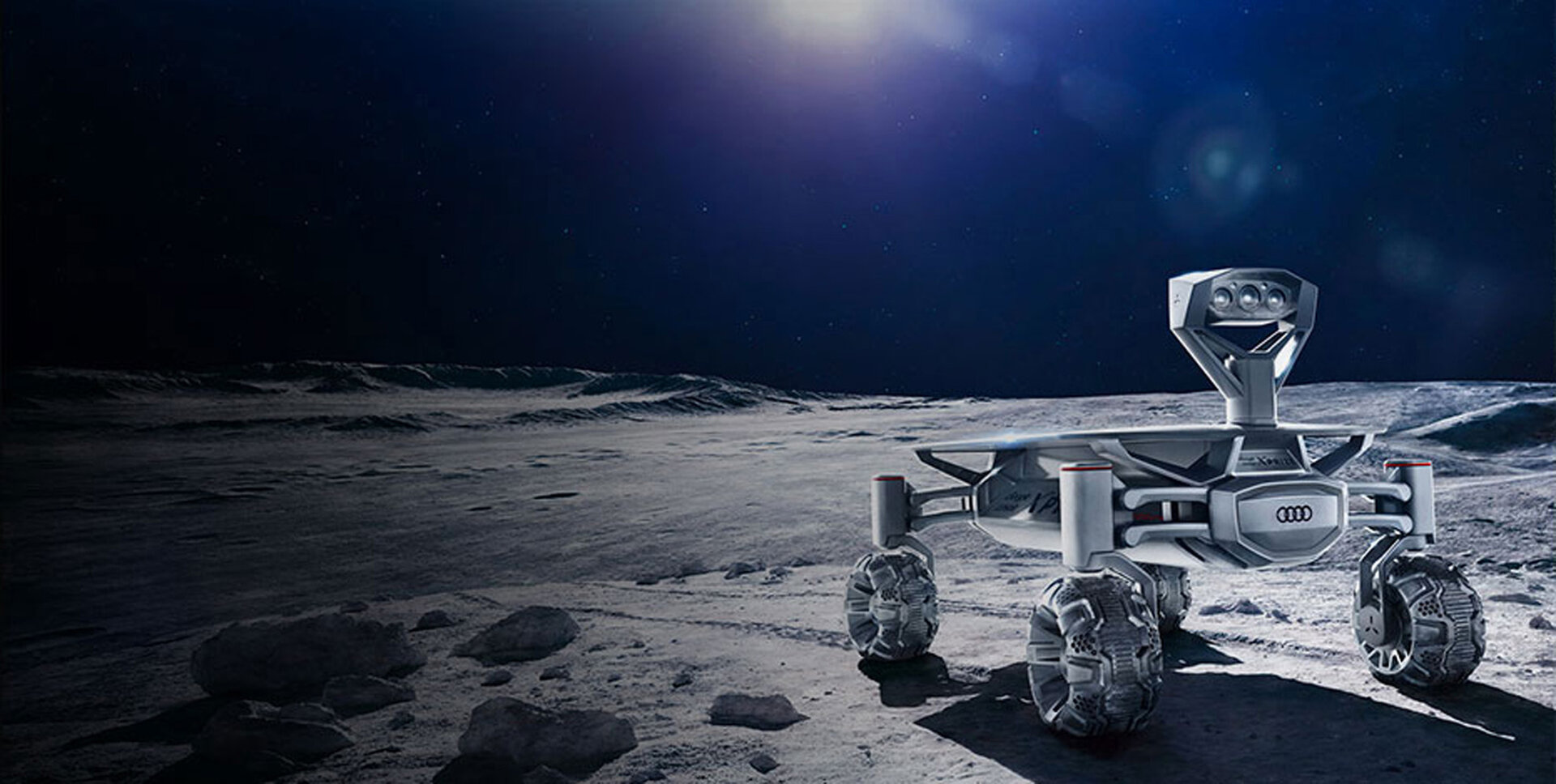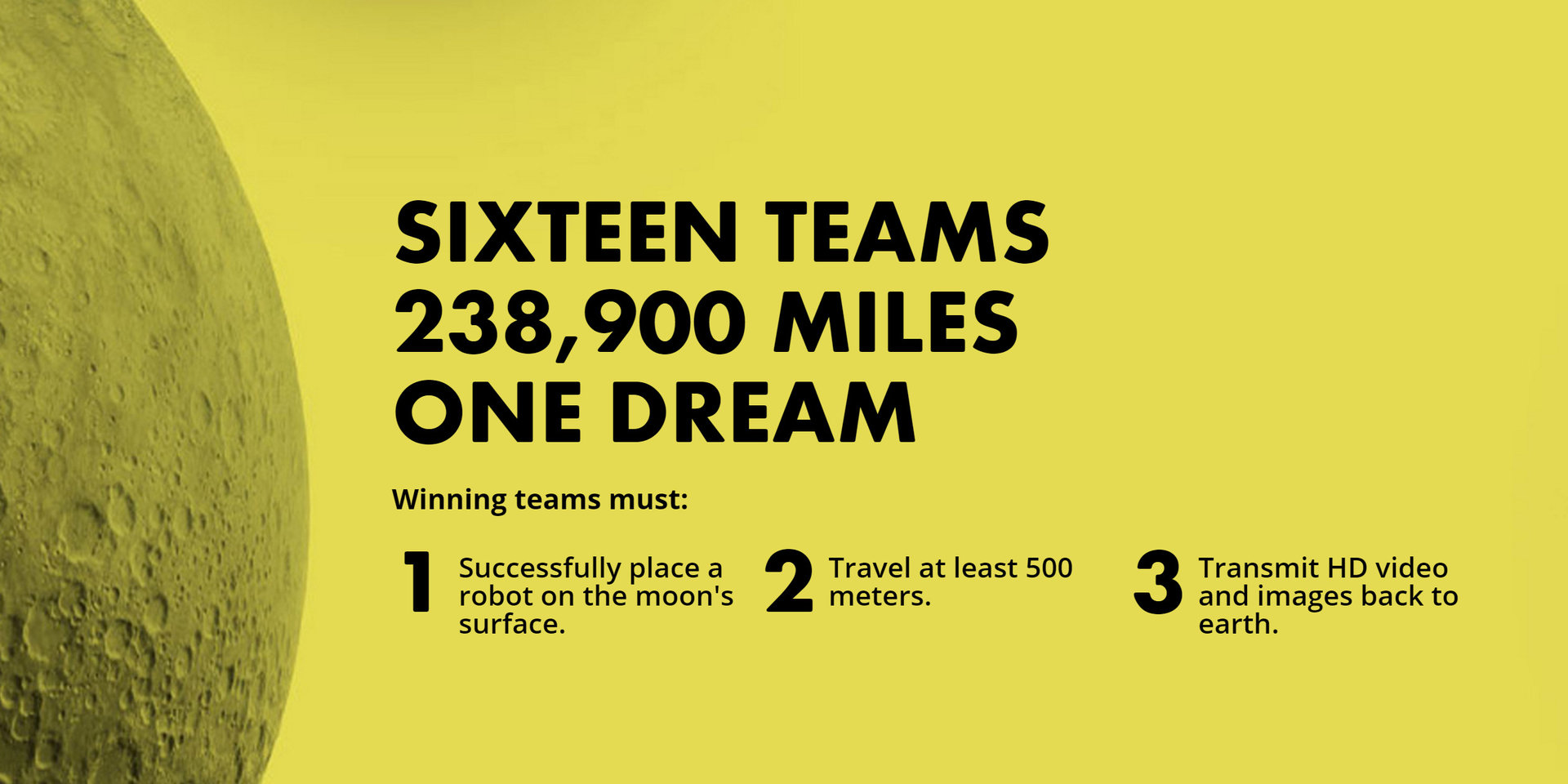Affiliate links on Android Authority may earn us a commission. Learn more.
The Lunar XPRIZE: For Google, sky's the limit

Despite a new focus on streamlining its operations in the Alphabet era, Google continues to acquire research-oriented companies and to fund heavily scientific research projects. Two examples from 2016 alone are AlphaGo’s machine learning algorithm, which we covered before, and a novel quantum computer that combines two quantum computing ideas in a way that has never been implemented before. Research produced as part of these projects is published in Nature and other world-renowned scientific publications, meaning that their scientific credentials are rock solid. But Google’s scientific ambitions go above and beyond these projects.
You might be thinking, with access to all that funding and the world’s brightest minds, the sky’s the limit for Google. And you wouldn’t be wrong!
In 2017, Google wants to help independent R&D teams send a rover up to the Moon! Welcome to the Lunar XPRIZE, which I think is the most fascinating Google-sponsored competition yet.

What is the Lunar XPRIZE?
Lunar XPRIZE is a competition in which 16 teams will try to land a rover on the Moon. The team whose rover covers the farthest distance on the surface of the Moon will be the winner. Of course, the rovers also need to record and transmit HD footage (at least 720p) of their exploits on the rocky surface of the Moon.
How big are the stakes?
The grand prize is $20 million, while the runner-up will take $5 million back home. To put this into perspective, the stake of the Go game disputed between Lee Sedol and AlphaGo’s software was $1 million (DeepMind was the winner, so Google got to keep the money). With Lunar XPRIZE, the stakes are much higher.
Besides the grand prizes, Google is also offering smaller prizes for the teams that reach certain milestones in the development of their projects. Some of these milestone rewards have already been handed out.
What are the rules and guidelines?
The rules of the contest only allow up to 10% in government funding for research and development of Lunar Rovers. This is probably to ensure that the competition remains as an independent and balanced endeavor.
The rest of the rules are fairly straightforward. The teams need to:
- Notify Google Lunar XPRIZE about their launch and landing dates;
- The rover needs to cover at least 500 meters on the moon and should carry 1% of its weight (no more than 500 grams);
- The team needs to send out at least 100 kB of data and receive the transmission of HD footage recorded on the moon by the rover.
And all of this should be completed by the end of 2017, so keep your eyes peeled!
Who are the main competitors?
There are competitors from all over the world, including United States, Chile, Malaysia, India, Canada, Brazil, Hungary, Japan, Germany, Italy, Israel and many international collaborations. One of the competitors, the Part-Time Scientists from Germany caught my attention in particular, as they are partnering with the highly-innovative automotive giant Audi, to design what they call the “Lunar Quattro.”
It looks like Audi is taking this competition very seriously and it is planning to be the first luxury brand on the moon. This makes me think about the possibility of the first smartphone on the moon, whether or not any of the teams intends to integrate a flagship smartphone to their hardware. I think this could be a whole other level of showing off IP ratings!
Regardless whether a Nexus will ever make it to the Moon, I think folks at Google should consider releasing limited editions of Nexus devices dedicated to their key scientific endeavors. I think we all agree that a lightly customized Lunar Edition or AlphaGo Edition would sound amazing. Something like what Samsung is doing with superhero limited editions, but for real geeks.
Getting back to the sky, the Lunar X competition could be one of the stepping stones towards achieving the dream of lunar colonization. Perhaps when, one day, we use a Google app to navigate the surface of the Moon, we’ll remember Lunar X as one of the projects that made that dream a reality.
A bit of science for the geeks
As a scientist, I want to dedicate a little bit of space to explain some of the recent scientific advancements in machine learning that could play a key role in the Lunar X competition.
We’re coming to realize that machine learning is already improving our daily lives. It’s also improving our smartphone user experience. For example, Google’s Now on Tap feature, which is built into Android Marshmallow, combines the prediction capabilities of a computer algorithm with data about our search preferences to understand what kind of information we want to get next. A similar approach helped AlphaGo beat human Go champions.
Machine learning algorithms improve prediction accuracy by updating the intuitions of a software by learning from previous outcomes. For example, we can think of Google’s self-driving cars as automatons that are currently in their training, or learning, phase. Once this learning process is advanced enough, self-driving cars will be “smart” enough to take over our daily driving responsibilities.
I think machine learning will play a key role for these lunar rovers, as well as similar robots that are sent to hostile environments here on Earth. On a related note, a recent study published in Nature shows how machines can recover from damage without any help from humans.
At 2:40 minutes, the robot moves almost like a wounded animal. In fact, it almost resembles Arnold Schwarzenegger’s T-800 android crawling at the end of Terminator 2, after enduring severe bodily injuries.
Thanks to a special optimization algorithm, the robot discovers what kind of adaptations it needs to make in order to continue its mission for as long as possible.
This approach could be extremely helpful in situations where the mission is too dangerous for humans, including those in the outer space. In these situations, it’s important for machines to have the ability to run diagnostics on themselves and find adaptive ways to recover from damage without any help from humans. For example, the robot that was sent to investigate the state of the reactor in the Fukushima Nuclear Power Plant, following the tragic earthquake and tsunami of 2011, failed to complete its mission because of extremely high levels of radiation (see the footage here). Could it have benefited from these new learning algorithms?
Considering that the rover that covers the farthest distance will win the Lunar XPRIZE, teams that employ self-recovery algorithms could have an upper hand. This is because their rovers will use all the information they collect to push the limits of their hardware and go as far into the dark of the Moon as possible. Surely, another big step for the mankind!
Suggested watching
Google teamed up with director JJ Abrams (of Star Trek and Star Wars fame) for a different kind of space flick. Check out his Moon Shot documentary series, which introduces some of the teams competing to win the XPRIZE. Check out the trailer and see the full episodes on the Lunar XPRIZE website.
Wrap up
Lunar XPRIZE is, without doubt, one of the most exciting Google-sponsored projects coming in the next couple of years. What do you think, should Google fund more competitions like this? And would you be interested in limited edition Lunar Nexus? Tell us what you think in the comments below!